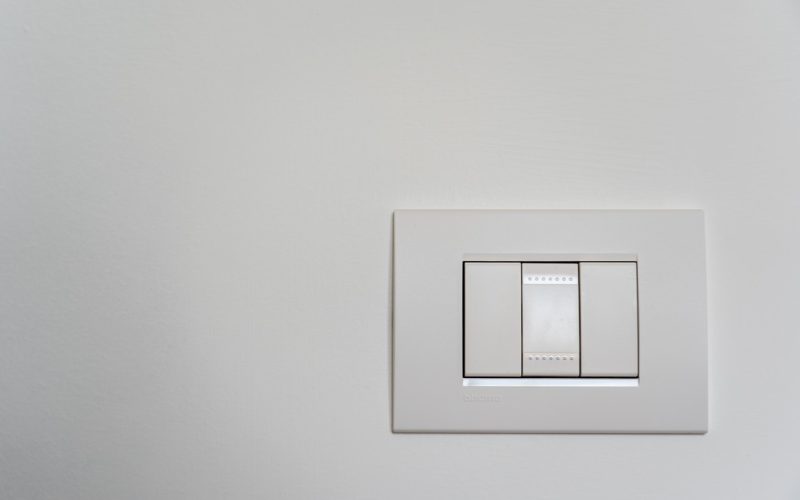Remote controlled light can be simple. The detachable device with the lowest entry barrier connects the lamp to a socket and serves as a remote control for the connected light. With the new technology, you can also connect to your smartphone, Google Home, or Alexa. Go to work, leave the lamp on forever: a plug-in controls the switching on and off of the lamp. Within seconds you can be checking out some of the lights in your living room, bedroom, or anywhere the lights are plugged into an outlet. You can check it from anywhere in the world.
Wi-Fi connections are perfect for delivering high-speed devices and services to smart home switches and connecting to the cloud system through a home gateway. On the other hand, due to the large stack of Wi-Fi protocols, memory and processor necessities, and the star network, Wi-Fi is not suitable for Lightning networks. Connected Bluetooth-enabled smart home switches provide a direct connection to smartphone apps and enable device control without using Wi-Fi power. However, the number of Bluetooth / BLE network devices is limited and it lacks the payback of scalability and mesh system.
Smart home lighting control
ZigBee Networking Technology is a limited mesh network based on the 802.15.4 standard that can be expanded to connect many devices. The network defines intelligent lighting functions and home automation devices that provide brightness adjustment, RGB colour, and colour temperature control for intelligent lighting. The benefits of ZigBee for mesh networks are ideal. However, direct control from a smartphone is not maintained for smart home lighting control. The network’s gateway router acts as an overpass to attach ZigBee devices to IP-based Wi-Fi / Ethernet LANs and provides internet management and cloud connectivity.
Today’s homeowners can control multiple lights throughout the home using an internal touchpad or a smartphone or tablet connected to Wi-Fi or Bluetooth. This way, you can access it anytime, anywhere. These wireless features require replacing home switches and dimmers, simple reconfiguration, and downloading the manufacturer’s app. The colour matching of LEDs is also popular. In this way, the user can switch the light from cool white to warm tones of traditional yellow and even from white to blue or another colour.
After all, smart home lighting control isn’t as simple as replacing a light bulb with a smart one. Not all lighting control system manufacturers make lamps. Therefore, contractors need to know which lamps are compatible with which controllers. Also, many older switches and dimmers will not work with LED lamps and lights or will cause some lamps to flicker. The light on the remote doesn’t mean you press the remote to turn the light on and off, but it is possible. Not only that. With the backlit remote control, you can control and access your home from anywhere with your smartphone, laptop, Apple Watch, Siri, or another voice assistant. Remote controlled light can be simple. Even if you are at home and not “remote”, you can access smart home products through a simple integration process.
By making sure these smart lighting systems are well-matched with each other, you can make a firm base that will scale over the years. It is important to know which smart lighting system works independently of the smart home hub. Hubs have their advantages (most importantly, they have a single user interface that controls everything), but hubs aren’t always required. However, one of the things that you will need is a good wireless router. Ideally, this is a router that can reach every corner of your home.
The development of wireless SoCs integrated into multi-protocol stacks is attractive that offers manufactured devices’ upgrades, improved user experiences, and expanded use cases for networked illumination and home computerization projects.
Programmable multi-protocol
The most essential sustain for multiple protocols is for manufacturers to program their chipsets during production using a software load that can run a variety of wireless procedures such as Bluetooth Smart, ZigBee, or any proprietary protocols.
One method to construct a smart lighting system is to acquire lots of components like sensors, smart light bulbs, surveillance cameras, and speakers. Then you can plug these devices into a hub to communicate with each other or through your smartphone. But let’s make it a reality. It costs a lot and you also need to invest time for the entire set-up. And for some people, this is not possible. If a user wants are simpler, a few comparatively reasonably priced products present the greatest convenience to make his/her home a high-end smart home. Moreover, the network can be completed on a much more modest budget.
Switched multi-protocol
Another thing you can try is multi-protocol platforms. These platforms have the capability to change supported wireless protocols by uploading a new firmware representation while the device is on-site construction. This requires the placement of several essential components but opens up many opportunities to secure existing products in the future. The following example of a future guarantee shows a lamp manufacturer who offers Bluetooth-enabled lamps to consumers who want to control the lighting directly from their smartphone using the app supplied.
In the future, however, consumers may want to purchase a ZigBee or Thread or home automation system that uses its protocol and adds lightbulbs to that ecosystem. Many smartphones use a dedicated wireless light link to power the device over a ZigBee or Thread network. Users interact with a smartphone app to connect the device to the network, set up pairing with other eligible devices on the network, and then switch to the ZigBee network stack or wired network used in the lighting control network.
If most of the lighting in your house is on the ceiling and controlled by wall switches, you can replace those dull switches with smart switches and dimmers. This is because when you turn off the switch that controls the smart bulb, the smart bulb will dull.

